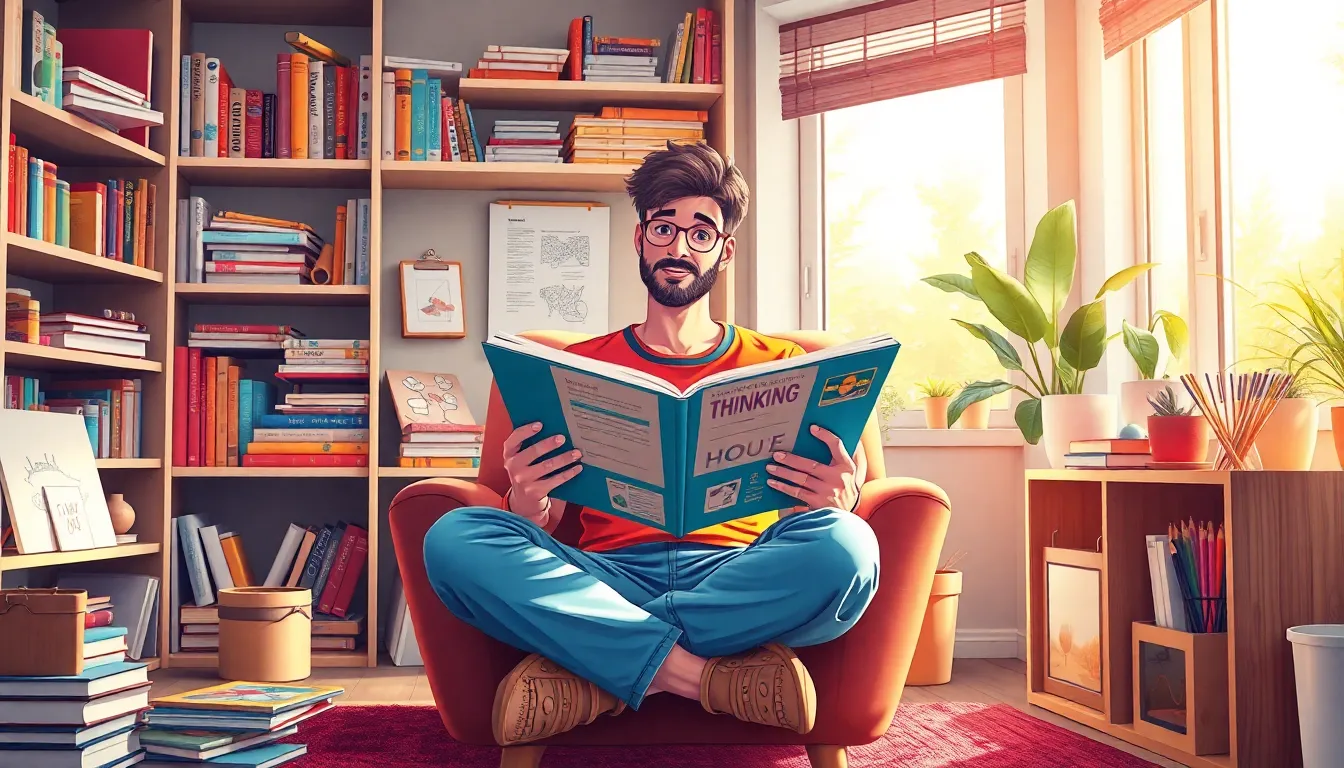In a world overflowing with information and the same old ideas, unlocking creativity can feel like searching for a needle in a haystack. Enter creative thinking books—your trusty guides to break free from the mundane and unleash the wild imagination lurking within. Whether you’re an artist, entrepreneur, or just someone trying to spice up their daily routine, these books promise to be the secret sauce that transforms your thinking from drab to fab.
Table of Contents
ToggleImportance Of Creative Thinking
Creative thinking unlocks new perspectives and ideas. It stands as a crucial skill in today’s fast-paced world, enabling individuals to navigate complexities and embrace innovation.
Benefits Of Enhancing Creativity
Improved problem-solving abilities stem from enhanced creativity. Individuals often find that thinking outside the box leads to innovative solutions. Enhanced creativity boosts self-confidence and encourages risk-taking. Creative thinkers frequently express ideas with clarity, fostering better communication. Increased adaptability allows for quick responses to changing circumstances. Overall, cultivating creativity enriches personal growth and expands professional capabilities.
Applications In Various Fields
In business, creative thinking drives innovation and competitive advantage. Companies leveraging creativity often develop unique products and services that capture market interest. Education benefits from creative approaches, as they engage students and facilitate deeper understanding. Artists explore new techniques and mediums, broadening their expressive range through creative thinking. Healthcare professionals utilize creativity to devise novel solutions for patient care challenges. Creative thinking enhances collaboration across disciplines, fostering a culture of innovation.
Top Creative Thinking Books

Creative thinking books serve as essential guides for those aiming to enhance their innovative skills, offering rich insights and techniques.
Classic Titles To Consider
“Think and Grow Rich” by Napoleon Hill emphasizes the power of thoughts in achieving success. “The Artist’s Way” by Julia Cameron explores tools for unlocking creativity, making it a staple for artists. “A Whack on the Side of the Head” by Roger von Oech challenges conventional thinking and presents methods to inspire fresh ideas. “How to Think Like Leonardo da Vinci” by Michael J. Gelb provides strategies to cultivate curiosity and creativity. These classic titles are widely recognized for their impactful approaches to fostering creative thought.
Contemporary Must-Reads
“Creative Confidence” by Tom Kelley and David Kelley encourages individuals to unleash their creative potential. “The Creative’s Guide to Starting a Business” by Harriet Kelsall offers practical advice for integrating creativity into entrepreneurship. “Big Magic” by Elizabeth Gilbert explores the nature of inspiration, making it an insightful read. “Steal Like an Artist” by Austin Kleon promotes the idea that creativity builds on existing concepts. These contemporary titles reflect current perspectives on creativity, proving valuable for today’s readers.
How To Choose The Right Book
Choosing the right creative thinking book enhances the learning experience. Understanding personal goals and assessing authors and reviews can streamline the selection process.
Identifying Personal Goals
Clarifying intentions sets the foundation for book selection. Recognize whether the focus is on improving creativity for personal development, professional growth, or problem-solving skills. Consider specific needs, such as seeking inspiration, exploring new techniques, or fostering innovative thinking. Setting clear objectives helps narrow down options. If aiming to enhance collaboration skills, look for books that emphasize teamwork and creative processes. For artistic expression, prioritize books that focus on creative practices. Defining personal goals ensures the chosen book aligns with desired outcomes.
Assessing Authors And Reviews
Evaluating authors adds credibility to the selection process. Researching backgrounds and expertise helps determine if they possess the necessary knowledge and experience. Familiarity with their work often indicates skill levels and focuses. Additionally, examining reviews from readers provides insight into overall effectiveness and readability. Seek books with positive feedback on practical exercises and transformative insights. Noting common themes in reviews highlights strengths and weaknesses. Prioritizing well-reviewed books can enhance the likelihood of a fulfilling reading experience.
Tips For Implementing Ideas From Books
Implementing ideas from creative thinking books enhances creative capabilities. Consider these strategies to translate concepts into tangible practices.
Practical Exercises And Techniques
Engage in exercises that promote new ways of thinking. For instance, brainstorming sessions stimulate innovative ideas. Mind mapping aids in visualizing connections between concepts. Doodling encourages free association and sparks creativity. Regularly applying these techniques fosters a habit of exploration, allowing individuals to test and expand their creative boundaries. Setting specific goals for each session helps in tracking progress and nurturing growth.
Creating A Consistent Practice
Establish a routine that incorporates creative thinking practices to build habits. Dedicate time each week for reflection and creative exploration. Morning pages, a concept from “The Artist’s Way,” provide a powerful foundation for expression. Joining workshops or creative groups offers support and accountability while fostering collaboration. Surrounding oneself with other creative thinkers enhances motivation and inspiration. Remaining committed to a consistent practice solidifies creativity as a vital part of daily life.
Embracing creative thinking is essential for navigating today’s complex landscape. The right books can serve as catalysts for unlocking imagination and fostering innovative solutions. By exploring diverse perspectives and techniques, readers can cultivate a mindset that thrives on creativity.
Investing time in these resources not only enhances personal and professional growth but also enriches everyday experiences. As individuals engage with the insights and exercises these books offer, they’ll find themselves better equipped to tackle challenges and seize opportunities. Ultimately, the journey toward creativity is ongoing, and the right guidance can make all the difference.



